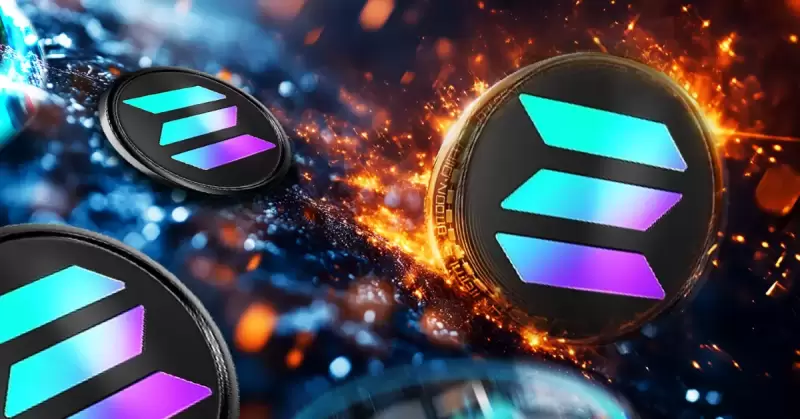 |
|
 |
|
 |
|
 |
|
 |
|
 |
|
 |
|
 |
|
 |
|
 |
|
 |
|
 |
|
 |
|
 |
|
 |
|

In past cycles, whenever Ethereum faced a "performance" dilemma, "Ethereum killers" would emerge. These Layer 1 blockchains aimed to capitalize on Ethereum's limitations, while Ethereum's Layer 2 solutions were positioned in opposition to them.
However, since Ethereum completed the Cancun upgrade this year, the narrative volume around Ethereum Layer 2 has surpassed that of Layer 1, even replacing Layer 1 as the mainstream narrative. On one hand, the competitive landscape of Layer 1 has not changed; from a market capitalization perspective, (excluding BTC) ETH, BNB, and Solana form a three-way stalemate, with ETH dominating. On the other hand, there is a question: why have we seen almost no new Ethereum killers emerge in this cycle?
Interestingly, Ethereum also seems to be trapped in the Layer 2 dilemma. Data from Token Terminal shows that ETH Layer 1 revenue has plummeted, declining by 99% since March 2024. Meanwhile, in August this year, Multicoin Capital criticized Ethereum Layer 2 on a Bankless program, and subsequently, Ethereum Foundation researchers stated in an AMA that Ethereum is still exploring Layer 1 rather than fully relying on Layer 2.
The issues obscured by the prosperity of Layer 2 are thus beginning to surface.
Public Chain Wars: A Past of Diverse Voices
Layer 1 and Layer 2 are different tiers of blockchain networks, where Layer 1 is the main chain, an autonomous chain where transactions are executed and confirmed directly, providing the necessary infrastructure for the blockchain network and interacting directly with users. Notable public chains like Bitcoin and Ethereum are at this level.
Layer 2 is an off-chain vertical scaling solution that runs on top of Layer 1 blockchains like Ethereum to enhance scalability. Popular projects at this layer include Arbitrum, Optimism, and others.
It can be said that Layer 1 exists before Layer 2. With technological advancements and market awareness updates, in addition to these two tiers, the blockchain ecosystem has also extended to Layer 0 and Layer 3. Layer 0 refers to the underlying infrastructure that can build multiple Layer 1 blockchains, while Layer 3 refers to the application layer based on blockchain, including games, wallets, and other DApps.
The public chain wars originated from Layer 1. To break Bitcoin's limitations, many public chains began to flourish. Bitcoin was originally designed as a trustless peer-to-peer electronic cash system and is also a Layer 1, with security and decentralization as its greatest advantages. To maintain these two characteristics, Bitcoin is not suitable for carrying too many applications and developments, thus having poor scalability.
Security, decentralization, and scalability are important components of the "blockchain trilemma" theory, proposed by Ethereum founder Vitalik Buterin, which states that a blockchain network cannot simultaneously achieve security, decentralization, and scalability.
Ethereum was officially launched in 2015. Shortly thereafter, several other public chains emerged, such as Cardano and Polkadot. Among them, Ethereum became the first widely recognized public chain with a Turing-complete programming language, filling the scalability gap of Bitcoin.
However, from a historical perspective, this scalability is limited. Whenever Ethereum's adoption rate rises, the network becomes congested, and to avoid the risk of "centralization creep" in the protocol, Ethereum developers are reluctant to increase throughput limits. Thus, in this scenario, Ethereum also falls into the "impossible triangle" dilemma. The most intuitive feeling is that whenever this moment arrives, using Ethereum becomes very expensive, or the speed slows down. For application creators and users, this is a disaster, but it gives competitors a chance to survive.
According to incomplete statistics, in 2018, the number of newly added public chains worldwide exceeded 100, marking the beginning of the "thousand chains" era. Among them, blockchains like EOS, TRON, Tezos, and Cardano completed fundraising activities of over $400 million, $200 million, $227 million, and $117 million respectively, becoming prominent projects in the market.
These public chains were once somewhat labeled as "Ethereum killers" by the market, and now some have been categorized into new types, with some classified as Layer 0 and others as Layer 2.
From 2020 to 2021, competition among public chains intensified, as not only did the number continue to grow, but existing public chains also engaged in a battle for market share, which can be seen from the data on developer activity:
By the end of 2021, as the market entered severe fluctuations and leveraged funds were cleared, some public chains gradually fell behind, forming the current landscape.
According to Token Terminal data, from a market capitalization perspective, there are only four public chains with a weight of over 1%, namely BTC, ETH, BNB, and Solana, which account for approximately 70.2
免責事項:info@kdj.com
提供される情報は取引に関するアドバイスではありません。 kdj.com は、この記事で提供される情報に基づいて行われた投資に対して一切の責任を負いません。暗号通貨は変動性が高いため、十分な調査を行った上で慎重に投資することを強くお勧めします。
このウェブサイトで使用されているコンテンツが著作権を侵害していると思われる場合は、直ちに当社 (info@kdj.com) までご連絡ください。速やかに削除させていただきます。
-

-

-

-

-

-

- 競走馬への投資は伝統的に超裕福でエリートの保護者でした
- 2025-04-03 16:45:13
- この群衆を引き付け続けていますが、コストと容易さを大幅にもたらす競走馬に投資する新しい方法があります
-

-

-




























































